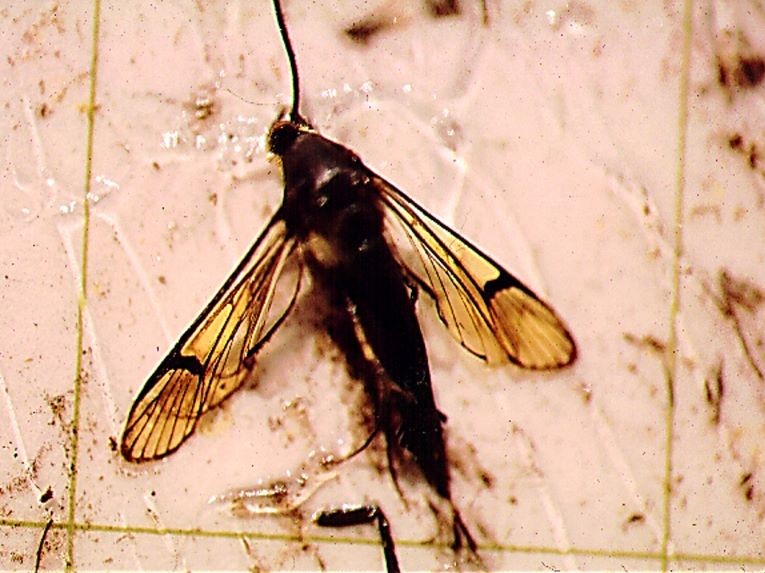Clearwing Borers
Lilac Clear Wing Borer: GDD Window (base 50): 148-299
Dogwood Clear Wing Borer: GDD Window (base 50): 148-700
Overview:
- Lilac clear wing borer (Podosesia syringae)
- >1 inch long, drab black and brown in color, wings more opaque than other species.More common earlier in the season.
- Dogwood clear wing borer (Synanthedone scitula)
- Smaller in size, (> ½ inch) can be trapped with pheromones, two pairs of wings that contain very few scales and are clear in appearance. Two yellow bands around the abdomen.
- Overwinter in tunnels under tree bark as larvae
- Pupate in spring, emerging as adults two weeks later
- Adults resemble wasps in both appearance and action, lay eggs in bark wounds
- Causes dying limbs, rough and gnarled bark, trunk and branch swellings, sap exudation, sawdust-like frass, brownish pupal cases emerging from the bark near the tree base
- Host plants:
- Lilac Borer: ash, lilac, olive, privet trees
- Dogwood Borer: apple, dogwood, pecan, elm, hickory, willow trees
Management:
Cultural Practices:
- Natural predators: braconid wasps, nematodes (Steinemema carpocapsae, S. Feltiae)
- Reduce plant stress (especially drought stress)
- Whitewash to reduce light exposure and sunburn
- Crush or puncture larvae to kill
- Pheromone traps – lure males to establish presence of adults, used to time contact treatments
Materials:
- Contact insecticides:
- Pyrethroids [3]: –thrins
- Systemic insecticides:
- Macrocyclic lactones [18]: Emamectin benzoate
- Glycosides [6]: Abamactin
- Considerations:
- Application of systemic insecticides have not been found to control clearwing moths or their larvae
Biorationals:
- Diamides [28]:Chlorantraniliprole





Disclaimer – Materials do not cover all possible control scenarios and are intended for licensed professionals. Tradenames do not imply endorsement and are used as examples. You must strictly follow the label for each compound prior to use. Rutgers is not responsible form is used materials or damages thereof. The label is the law. Labels will provide detailed information on use and restrictions. Additionally, application intervals, compatibility, surfactant use, PHI, PPE, important and other key information is described in detail. Always discuss treatments with your local agents. Note: Neonicotinoids can only be legally applied in commercial agriculture settings by licensed applicators. Guidelines and recommendations made in this presentation are specific to the state of New Jersey.
